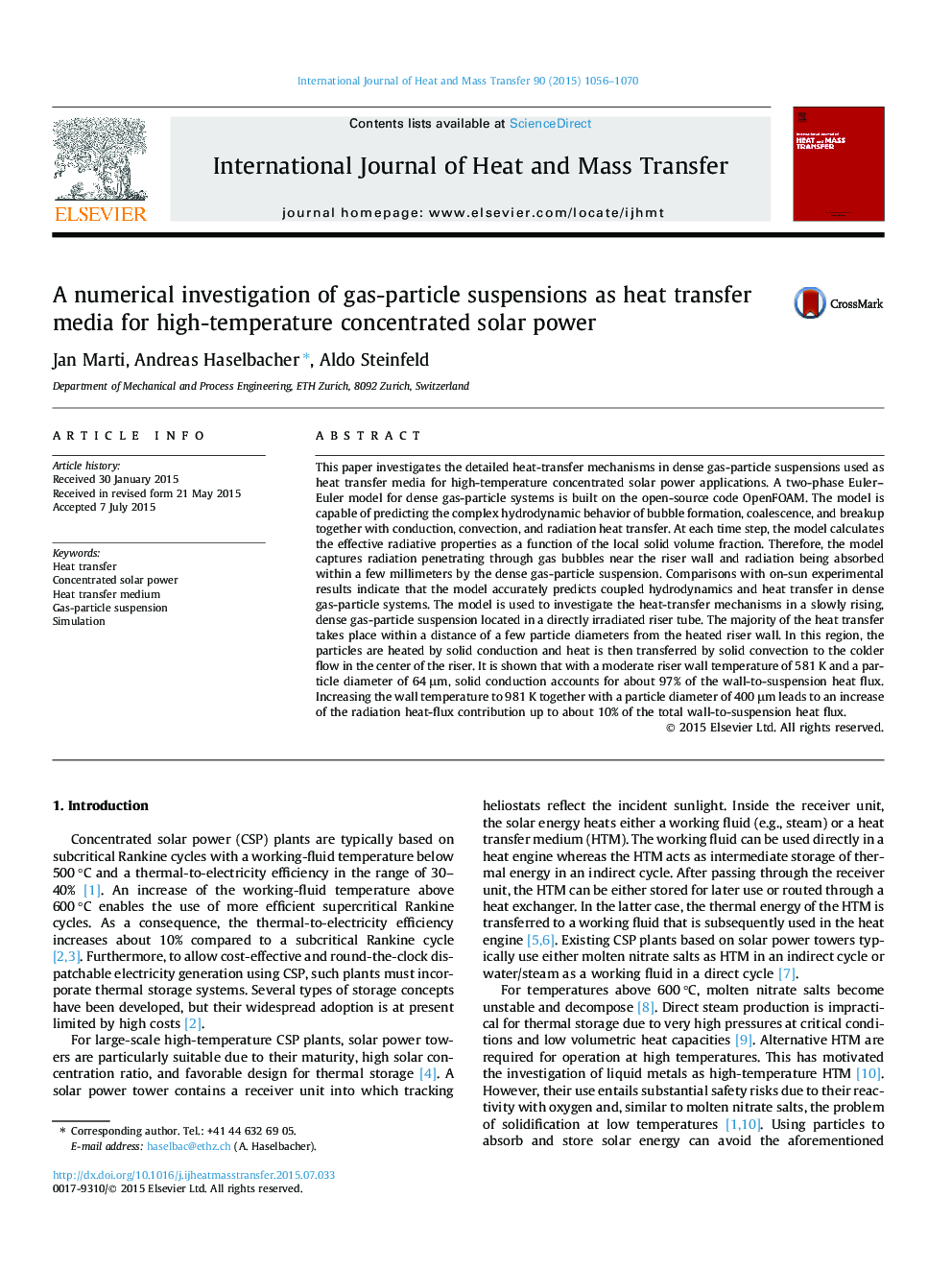| Article ID | Journal | Published Year | Pages | File Type |
|---|---|---|---|---|
| 7056576 | International Journal of Heat and Mass Transfer | 2015 | 15 Pages |
Abstract
This paper investigates the detailed heat-transfer mechanisms in dense gas-particle suspensions used as heat transfer media for high-temperature concentrated solar power applications. A two-phase Euler-Euler model for dense gas-particle systems is built on the open-source code OpenFOAM. The model is capable of predicting the complex hydrodynamic behavior of bubble formation, coalescence, and breakup together with conduction, convection, and radiation heat transfer. At each time step, the model calculates the effective radiative properties as a function of the local solid volume fraction. Therefore, the model captures radiation penetrating through gas bubbles near the riser wall and radiation being absorbed within a few millimeters by the dense gas-particle suspension. Comparisons with on-sun experimental results indicate that the model accurately predicts coupled hydrodynamics and heat transfer in dense gas-particle systems. The model is used to investigate the heat-transfer mechanisms in a slowly rising, dense gas-particle suspension located in a directly irradiated riser tube. The majority of the heat transfer takes place within a distance of a few particle diameters from the heated riser wall. In this region, the particles are heated by solid conduction and heat is then transferred by solid convection to the colder flow in the center of the riser. It is shown that with a moderate riser wall temperature of 581 K and a particle diameter of 64 μm, solid conduction accounts for about 97% of the wall-to-suspension heat flux. Increasing the wall temperature to 981 K together with a particle diameter of 400 μm leads to an increase of the radiation heat-flux contribution up to about 10% of the total wall-to-suspension heat flux.
Related Topics
Physical Sciences and Engineering
Chemical Engineering
Fluid Flow and Transfer Processes
Authors
Jan Marti, Andreas Haselbacher, Aldo Steinfeld,
